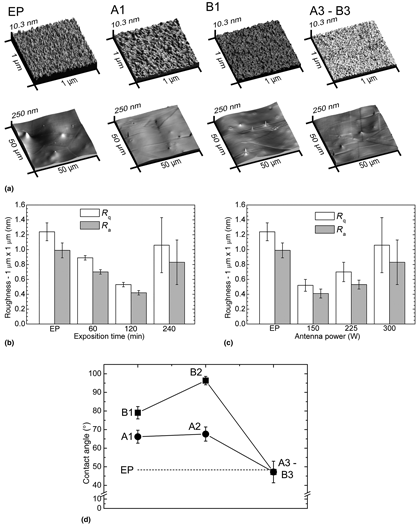Crossref Citations
This article has been cited by the following publications. This list is generated based on data provided by
Crossref.
Rahmati, Maryam
Silva, Eduardo A.
Reseland, Janne E.
A. Heyward, Catherine
and
Haugen, Håvard J.
2020.
Biological responses to physicochemical properties of biomaterial surface.
Chemical Society Reviews,
Vol. 49,
Issue. 15,
p.
5178.
Catanio Bortolan, Carolina
Paternoster, Carlo
Turgeon, Stéphane
Paoletti, Chiara
Cabibbo, Marcello
Lecis, Nora
and
Mantovani, Diego
2020.
Plasma-immersion ion implantation surface oxidation on a cobalt-chromium alloy for biomedical applications.
Biointerphases,
Vol. 15,
Issue. 4,
Phan, Thithuha
Jones, John E.
Chen, Meng
Bowles, Doug K.
Fay, William P.
and
Yu, Qingsong
2022.
A Biocompatibility Study of Plasma Nanocoatings onto Cobalt Chromium L605 Alloy for Cardiovascular Stent Applications.
Materials,
Vol. 15,
Issue. 17,
p.
5968.
Marin de Andrade, Leticia
Chevallier, Pascale
Paternoster, Carlo
Copes, Francesco
and
Mantovani, Diego
2023.
Plasma Immersion Ion Implantation of a Fe-Mn-C Based Steel for Biomedical Applications: Effect of Gases and Treatment Times on the Surface Properties.
Key Engineering Materials,
Vol. 967,
Issue. ,
p.
79.
Sotoudeh Bagha, Pedram
Paternoster, Carlo
Khakbiz, Mehrdad
Sheibani, Saeed
Gholami, Navid
and
Mantovani, Diego
2023.
Surface Modification of an Absorbable Bimodal Fe-Mn-Ag Alloy by Nitrogen Plasma Immersion Ion Implantation.
Materials,
Vol. 16,
Issue. 3,
p.
1048.
Shekargoftar, Masoud
Ravanbakhsh, Samira
de Oliveira, Vinicius Sales
Buhagiar, Joseph
Brodusch, Nicolas
Bessette, Stéphanie
Paternoster, Carlo
Witte, Frank
Sarkissian, Andranik
Gauvin, Raynald
and
Mantovani, Diego
2024.
Effects of plasma surface modification of Mg-2Y-2Zn-1Mn for biomedical applications.
Materialia,
Vol. 38,
Issue. ,
p.
102285.
